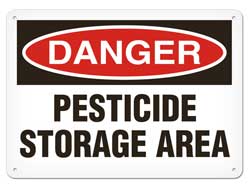| The Home page of ILPI's Safety Data Sheet (SDS) Resource, the leader in SDS information since 1995! | |
| The history and philosophy behind this resource. | |
| A curated collection of books and reference materials concerning Safety Data Sheets and closely related topics. | |
| Paste your plain text SDS into the SDS-Demystifier, and it will be converted into a hypertext-enriched document with links to detailed explanations of each key term. | |
| An extensive list of frequently asked questions about Safety Data Sheets including regulations, content, compliance, and more. | |
| A humorous take on Safety Data Sheet jargon. Fill in the blanks on our entry form to generate a personalized Unsafety Data Sheet to share with your coworkers. | |
| Since 1995, we've maintained this massive curated list of the best places to find Safety Data Sheets on the Internet. | |
| Way more than a glossary, this hypertext-enhanced resource covers hundreds of SDS-related terms and expert knowledge. Each entry includes both the SDS relevance and links to additional authoritative resources. | |
| Archived results of Safety Data Sheet related polls taken by some of our millions of site visitors | |
| You are here! The OSHA regulations behind SDS regulations, including the inspection guidelines and over 400 official interpretations letters under the Hazard Communication Standard | |
| Commercial suppliers of SDS authoring and management software as well as cloud compliance services. | |
| Commercial companies that will create SDS's for your specific needs as well as SDS translation companies. |

Safety signs, banners, and scoreboards? Get yours at Safety Emporium!
| Title: 09/11/2019 - Precautionary statements in Hazard Communication Standard | |
| Record Type: Interpretation | Standard Number: 1910.1200, 1910.1200 App C |
OSHA requirements are set by statute, standards and regulations. Our interpretation letters explain these requirements and how they apply to particular circumstances, but they cannot create additional employer obligations. This letter constitutes OSHA's interpretation of the requirements discussed. Note that our enforcement guidance may be affected by changes to OSHA rules. Also, from time to time we update our guidance in response to new information. To keep apprised of such developments, you can consult OSHA's website at https://www.osha.gov.
September 11, 2019

Get your GHS-compliant labels and signs from Safety Emporium.
Mr. Travis Willard
Product Steward
Ascend Performance Materials
1010 Travis Street, Suite 900
Houston, Texas 77002
Dear Mr. Willard:
Thank you for your letter to the Occupational Safety and Health Administration 's (OSHA) Directorate of Enforcement Programs. You requested clarification on precautionary statements required by the Hazard Communication standard (HCS), 29 CFR 1910.1200. This letter constitutes OSHA 's interpretation only of the requirements herein, and may not be applicable to any questions not delineated within your original correspondence. Your paraphrased questions and our responses are below.
Question 1: When the precautionary statements, “Immediately call a poison center/doctor” and “Call a poison center/doctor/…./if you feel unwell,” appears on a label, is it acceptable to only use the more protective statement, “Immediately call a poison center/doctor” per Appendix C.2.4.7?
Response: Yes, where a chemical is classified for a number of hazards, and the precautionary statements are similar, the most stringent must be included on the label. See Appendix C, C.2.4.7 of the HCS. For more information on the use of precautionary statements, please refer to the Hazard communication directive, Inspection Procedures for the Hazard Communication Standard (HCS 2012), dated July 9, 2015, found at https://www.osha.gov/sites/default/files/enforcement/directives/CPL_02-02-079.PDF
Question 2: When precautionary statements are similarly worded, is it permissible to omit irrelevant word(s) or rearrange and reword?
Response: Yes, precautionary statements may be arranged to create an order of preference, or combined to save space and improve readability. However, all precautionary statements must be listed except as otherwise noted in Appendix C, C.2.4.5, C.2.4.6, and C.2.4.8.
Question 3. Is it permissible to use a precautionary statement that essentially combines the precautionary statements from the C.4.1, Acute Toxicity-Oral precautionary statements, with C.4.4., Skin Corrosion/Irritation, precautionary statements?
Response: Please see response to question 2.

Safety Emporium has a wide selection of DANGER signs.
Question 4. Where exposure by multiple routes requires the precautionary statement, “If exposed: Immediately call a poison center or doctor. Get medical attention immediately,” is it acceptable, on both the label and SDS, to state this precautionary statement only once, and then follow it with each of the individual exposure route precaution statements?
Response: Please see response to question 2.
Thank you for your interest in occupational safety and health, we hope you find this information helpful. OSHA 's requirements are set by statute, standards, and regulations. Our letters of interpretation do not create new or additional requirements but rather explain these requirements and how they apply to particular circumstances. This letter constitutes OSHA 's interpretation of the requirements discussed. From time to time, letters are affected when the Agency updates a standard, a legal decision impacts a standard, or changes in technology affect the interpretation. To assure that you are using the correct information and guidance, please consult OSHA 's website at www.osha.gov. If you have further questions, please feel free to contact the Office of Health Enforcement at (202) 693-2190.
Sincerely,
Patrick J. Kapust, Acting Director
Directorate of Enforcement Programs
The original official public domain version of this document is available from OSHA at https://www.osha.gov/laws-regs/standardinterpretations/2019-09-11.